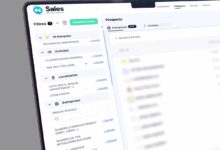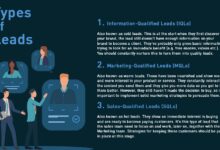Leads Bank: 7 Powerful Strategies to Skyrocket Your Lead Generation
In today’s hyper-competitive digital landscape, a leads bank isn’t just a luxury—it’s a lifeline. Whether you’re a startup or an established enterprise, mastering your leads bank can be the ultimate game-changer for sustainable growth.
What Is a Leads Bank and Why It Matters

A leads bank is more than just a database of potential customers. It’s a strategic asset that stores, organizes, and nurtures prospects who have shown interest in your product or service. Think of it as a digital vault where every lead is a seed waiting to grow into a loyal customer.
Defining the Concept of a Leads Bank
The term leads bank refers to a centralized system—often powered by CRM software—where businesses collect, manage, and analyze leads. These leads can come from various sources: website forms, social media campaigns, webinars, or even offline events. The goal is to transform raw interest into measurable sales opportunities.
- Acts as a repository for contact information and behavioral data
- Enables segmentation based on demographics, interests, or engagement levels
- Facilitates automated follow-ups and personalized communication
How a Leads Bank Differs from Traditional Lead Lists
Unlike static spreadsheets or outdated contact lists, a modern leads bank is dynamic. It integrates with marketing automation tools, tracks user behavior in real time, and supports lifecycle marketing. For example, while a traditional list might store names and emails, a leads bank records when a lead opened an email, clicked a link, or visited a pricing page.
“A leads bank turns passive data into active intelligence.” — Marketing Automation Expert, Neil Patel
The Role of a Leads Bank in Sales Funnel Optimization
Every stage of the sales funnel—from awareness to decision—can be enhanced by a well-maintained leads bank. By analyzing lead behavior, businesses can identify bottlenecks, predict conversion probabilities, and tailor messaging accordingly. This leads to higher conversion rates and shorter sales cycles.
- Top of Funnel (TOFU): Capture anonymous visitors through gated content
- Middle of Funnel (MOFU): Nurture leads with targeted emails and case studies
- Bottom of Funnel (BOFU): Convert hot leads with demos, trials, or consultations
Building a High-Quality Leads Bank: Step-by-Step Process
Creating a robust leads bank doesn’t happen overnight. It requires a systematic approach that combines technology, strategy, and continuous optimization. Let’s break down the essential steps to build a leads bank that delivers consistent results.
Step 1: Define Your Ideal Customer Profile (ICP)
Before collecting leads, you must know who you’re targeting. An Ideal Customer Profile outlines the characteristics of your most valuable customers—industry, company size, job title, pain points, and buying behavior. This ensures your leads bank is filled with high-potential prospects, not just random contacts.
- Use customer interviews and sales data to refine your ICP
- Leverage tools like HubSpot’s Make My Persona to create detailed buyer personas
- Align ICP with marketing and sales teams for consistency
Step 2: Choose the Right CRM Platform
Your CRM is the backbone of your leads bank. Platforms like Salesforce, HubSpot, or Zoho CRM offer powerful features for lead capture, scoring, and nurturing. The right CRM should integrate seamlessly with your website, email marketing tools, and analytics systems.
- Look for automation capabilities and AI-driven insights
- Ensure mobile accessibility and user-friendly interface
- Check for third-party integrations (e.g., LinkedIn, Google Ads)
Step 3: Implement Multi-Channel Lead Capture
Diversify your lead sources to build a resilient leads bank. Relying on a single channel—like organic search—can be risky. Instead, use a mix of inbound and outbound strategies to attract leads from various touchpoints.
- Website forms with compelling CTAs (e.g., “Download Free Guide”)
- Social media lead ads on LinkedIn and Facebook
- Webinars, live events, and podcast sign-ups
- Offline methods like trade shows and networking events
Top 5 Tools to Supercharge Your Leads Bank
Technology plays a pivotal role in managing and scaling your leads bank. Here are five industry-leading tools that can help you capture, organize, and convert leads more effectively.
1. HubSpot CRM: The All-in-One Solution
HubSpot offers a free CRM that’s perfect for startups and small businesses. It allows you to track leads, automate emails, and monitor deal pipelines. Its seamless integration with marketing and sales tools makes it a top choice for building a scalable leads bank.
- Free plan includes contact management and email tracking
- Advanced features like lead scoring and workflow automation
- Learn more at HubSpot CRM
2. Salesforce: Enterprise-Grade Power
Salesforce is the gold standard for large organizations. With its robust analytics, AI-powered Einstein Assistant, and extensive app ecosystem, it transforms your leads bank into a strategic command center.
- Customizable dashboards and reporting
- Advanced lead routing and territory management
- Explore features at Salesforce Sales Cloud
3. Leadfeeder: Identify Anonymous Website Visitors
One of the biggest challenges in lead generation is knowing who visits your site. Leadfeeder uses IP tracking to identify companies visiting your website, allowing you to proactively reach out—even if they haven’t filled out a form.
- Integrates with Google Analytics and CRM systems
- Provides real-time visitor insights
- Visit Leadfeeder for a free trial
4. Hunter.io: Find Email Addresses at Scale
Building a leads bank often starts with finding the right contact information. Hunter.io lets you discover verified email addresses from any domain, making cold outreach more efficient and accurate.
- Email finder and verifier tools
- Chrome extension for quick lookups
- API integration for automated workflows
- Check it out at Hunter.io
5. Zapier: Automate Lead Flow Across Apps
Zapier connects your leads bank with hundreds of apps, automating repetitive tasks like adding new leads to your CRM, sending welcome emails, or updating spreadsheets. This eliminates manual data entry and reduces errors.
- Create “Zaps” to trigger actions between apps
- Supports integrations with Typeform, Mailchimp, Slack, and more
- Start automating at Zapier
How to Nurture Leads in Your Leads Bank
Collecting leads is only half the battle. The real magic happens when you nurture them. A well-nurtured leads bank can increase conversion rates by up to 50%, according to research by the Annuitas Group.
Create a Lead Nurturing Workflow
A lead nurturing workflow is a series of automated emails, messages, or tasks designed to guide prospects through the buyer’s journey. These workflows should be personalized, timely, and value-driven.
- Segment leads based on behavior (e.g., downloaded a guide vs. attended a webinar)
- Send educational content in the early stages
- Transition to product-focused content as leads warm up
Use Lead Scoring to Prioritize Follow-Ups
Not all leads are created equal. Lead scoring assigns points based on engagement (e.g., email opens, page visits) and demographic fit (e.g., job title, company size). High-scoring leads are more likely to convert and should be prioritized by your sales team.
- Define scoring criteria in collaboration with sales
- Set thresholds for “Marketing Qualified Lead” (MQL) and “Sales Qualified Lead” (SQL)
- Adjust scoring models based on conversion data
Leverage Personalization at Scale
Personalization boosts engagement and trust. Use your leads bank data to personalize subject lines, email content, and landing pages. Dynamic content tools can show different messages based on the lead’s industry, location, or past behavior.
- Use merge tags to insert names, companies, or recent actions
- Recommend content based on previous downloads or views
- Test personalized CTAs vs. generic ones
Integrating Your Leads Bank with Marketing Automation
Marketing automation is the engine that powers a high-performing leads bank. When integrated correctly, it enables businesses to deliver the right message to the right person at the right time—without manual intervention.
Email Automation Sequences
Automated email sequences are a cornerstone of lead nurturing. For example, a “Welcome Series” can introduce new leads to your brand, while a “Re-engagement Campaign” can win back inactive subscribers.
- Set up drip campaigns based on lead source or behavior
- Use A/B testing to optimize open and click-through rates
- Include clear CTAs in every email
Behavioral Triggers and Dynamic Content
Modern marketing platforms allow you to trigger actions based on user behavior. If a lead visits your pricing page three times, they might receive a special offer. If they abandon a cart, they get a reminder email.
- Set up triggers for key actions (e.g., form submission, video watch)
- Use dynamic content blocks to personalize landing pages
- Monitor trigger effectiveness through analytics
Syncing CRM and Marketing Platforms
For your leads bank to be truly effective, your CRM and marketing automation tools must be in sync. This ensures that sales teams have real-time visibility into lead activity and can respond promptly.
- Use native integrations or middleware like Zapier
- Ensure data fields are mapped correctly (e.g., lead status, source)
- Regularly audit data for accuracy and duplicates
Measuring the Success of Your Leads Bank
You can’t improve what you don’t measure. Tracking key performance indicators (KPIs) helps you understand how well your leads bank is performing and where to focus optimization efforts.
Key Metrics to Monitor
These metrics provide insight into the health and effectiveness of your leads bank:
- Lead Conversion Rate: Percentage of leads that become customers
- Cost Per Lead (CPL): How much you spend to acquire each lead
- Lead-to-Customer Velocity: Average time from lead capture to sale
- Lead Quality Score: Assessed by sales team feedback and conversion rates
- Database Growth Rate: How quickly your leads bank is expanding
Using Analytics to Optimize Lead Flow
Analytics tools like Google Analytics, CRM dashboards, and marketing platforms provide a wealth of data. Use this data to identify trends, such as which channels generate the highest-quality leads or which content drives the most conversions.
- Create custom reports to track lead source performance
- Conduct cohort analysis to see how leads behave over time
- Use funnel visualization to spot drop-off points
Regular Audits and Data Hygiene
A cluttered or outdated leads bank can hurt your marketing efforts. Regular audits ensure data accuracy, compliance with privacy laws (like GDPR), and optimal performance.
- Remove duplicates and invalid email addresses
- Update job titles and company information
- Re-engage inactive leads or suppress them from campaigns
Common Mistakes to Avoid in Managing a Leads Bank
Even the best strategies can fail if common pitfalls are ignored. Here are some mistakes businesses make when managing their leads bank—and how to avoid them.
Mistake 1: Collecting Leads Without a Clear Strategy
It’s tempting to collect as many leads as possible, but quantity doesn’t equal quality. Without a clear strategy, you end up with a bloated database of unqualified contacts that waste sales team time.
- Solution: Focus on quality over quantity. Use lead qualification criteria from day one.
Mistake 2: Ignoring Lead Nurturing
Many companies capture leads but fail to nurture them. According to Marketo, 80% of marketing-generated leads go nowhere due to poor follow-up.
- Solution: Implement automated nurturing campaigns and assign ownership to marketing or sales development reps (SDRs).
Mistake 3: Poor CRM Adoption by Sales Teams
If your sales team doesn’t use the CRM consistently, your leads bank becomes outdated and unreliable.
- Solution: Provide training, incentivize data entry, and ensure the CRM is user-friendly.
Mistake 4: Neglecting Data Privacy and Compliance
Failing to comply with regulations like GDPR or CAN-SPAM can result in fines and reputational damage.
- Solution: Obtain explicit consent, provide opt-out options, and document data handling practices.
Future Trends Shaping the Evolution of Leads Bank Systems
The concept of a leads bank is evolving rapidly due to advancements in AI, data analytics, and customer expectations. Staying ahead of these trends ensures your lead generation strategy remains competitive.
AI-Powered Lead Scoring and Predictive Analytics
Artificial intelligence is transforming how leads are evaluated. AI models can analyze vast datasets to predict which leads are most likely to convert, reducing guesswork and improving efficiency.
- Tools like Salesforce Einstein and HubSpot Predictive Lead Scoring are leading the way
- AI can also suggest the best time to contact a lead
Account-Based Marketing (ABM) Integration
ABM focuses on targeting specific high-value accounts rather than individual leads. Modern leads banks are adapting to support ABM by tracking engagement at the company level, not just the contact level.
- Use intent data to identify accounts actively researching solutions
- Coordinate personalized campaigns across multiple stakeholders
Increased Emphasis on Zero-Party Data
As third-party cookies decline, businesses are turning to zero-party data—information customers willingly share. This includes preferences, purchase intentions, and feedback, making your leads bank more accurate and trustworthy.
- Use quizzes, surveys, and preference centers to collect zero-party data
- Offer value in exchange for data (e.g., personalized recommendations)
What is a leads bank?
A leads bank is a centralized system that collects, organizes, and nurtures potential customer information. It serves as a strategic database for managing prospect interactions and improving conversion rates through targeted marketing and sales efforts.
How do I build a high-quality leads bank?
To build a high-quality leads bank, define your ideal customer profile, choose a reliable CRM, implement multi-channel lead capture, and establish automated nurturing workflows. Focus on data quality, segmentation, and continuous optimization.
What tools are best for managing a leads bank?
Top tools include HubSpot CRM, Salesforce, Leadfeeder, Hunter.io, and Zapier. These platforms help with lead capture, enrichment, automation, and integration across marketing and sales systems.
How can I improve lead conversion from my leads bank?
Improve conversion by using lead scoring, personalized nurturing campaigns, behavioral triggers, and regular data hygiene. Align sales and marketing teams to ensure timely follow-ups and consistent messaging.
Is a leads bank the same as a CRM?
Not exactly. A CRM is a software platform, while a leads bank refers to the strategy and data ecosystem built within a CRM. The leads bank is the content; the CRM is the container.
Building and maintaining a powerful leads bank is no longer optional—it’s essential for sustainable business growth. From defining your ideal customer to leveraging AI-driven insights, every step you take strengthens your ability to convert interest into revenue. By avoiding common pitfalls, embracing automation, and staying ahead of trends, your leads bank can become your most valuable asset in the digital age. Start optimizing yours today, and watch your conversion rates soar.
Further Reading:







